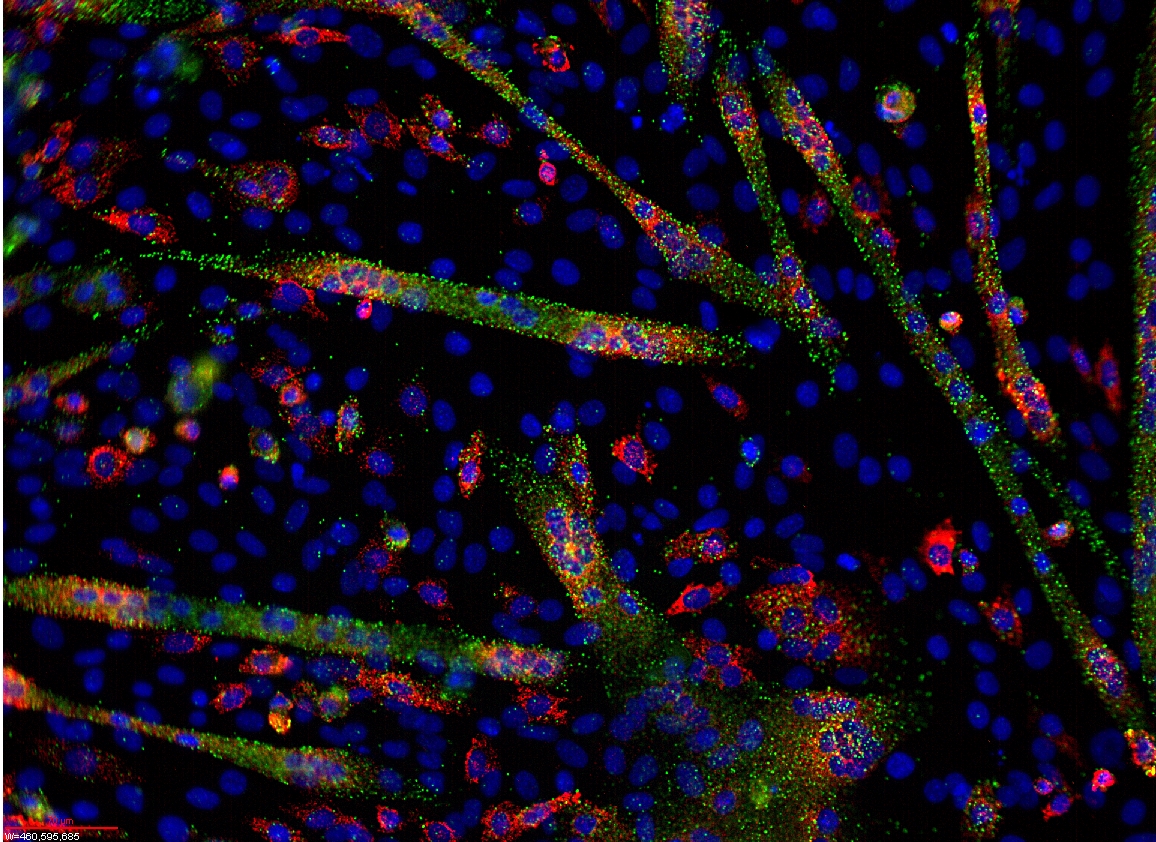 A tiny genetic molecule known as a microRNA plays a central role in bowel cancer and could be key to developing new treatments for the disease, a new study concludes.
A tiny genetic molecule known as a microRNA plays a central role in bowel cancer and could be key to developing new treatments for the disease, a new study concludes.
Scientists found that the molecule, called microRNA 135b, is a vital ‘worker’ employed by several important cancer genes to drive the growth of bowel cancers.
Drugs targeted at the microRNA could knock out the effects of multiple cancer-causing mutations at once, while tests for it could identify patients with the most aggressive disease, the researchers believe.
The research was carried out by an international team including scientists based at The Institute of Cancer Research, London, the University of Glasgow and Ohio State University in the US.
Scientists tested for microRNA 135b in 485 patients with bowel cancer and found that levels were at least four times as high in tumours as in healthy tissue, and that patients with the highest levels survived the least long.
They showed that blocking the microRNA stopped tumour growth in bowel cancer mouse models, and in half of them tumours regressed so dramatically they could no longer be seen by imaging. Mice didn’t show any side-effects as a result of treatment.
The study is published today (Monday) in the prestigious journal Cancer Cell, with funding for the UK research team coming from the Kimmel Cancer Foundation, Cancer Research UK, The Marie Curie Actions Programme and a Scottish Senior Clinical Research Fellowship.
MicroRNAs are small strands of genetic material that regulate gene activity and are involved many cellular processes.
The study showed that a number of known cancer gene mutations, such as APC, PI3KCA, SRC and p53, exercise their effects through microRNA 135b.
Although treatments targeting bowel cancer mutations have been developed, patients often develop resistance. Inhibiting microRNA 135b could be an exciting way to attack cancers without resistance occurring by blocking the effects of multiple cancer-causing mutations simultaneously.
The findings also suggest that testing levels of microRNA 135b could help identify patients likely to develop aggressive bowel cancer, and who might need the most intensive treatment.
Lead author Dr Nicola Valeri, Leader of the Gastrointestinal Cancer Biology and Genomics Team at the ICR said: “We have shown that a specific microRNA can drive the development of bowel cancers and is a key ‘worker’ responsible for putting into action the instructions from many cancer-causing mutations. Patients with the highest levels of this molecule have the most difficult-to-treat cancers, and inhibiting the molecule in mice prevents tumours from growing. Although the research is at an early stage, our findings may have an important impact in the way we treat patients with bowel cancer in the future.”
Professor Paul Workman, Deputy Chief Executive of the ICR said: “This work sheds light on the important role of microRNAs in bowel cancer and opens up a potentially exciting new avenue for cancer treatment. It also gives us a marker of disease that might prove valuable in the clinic to predict which patients have a more aggressive cancer.
“MicroRNAs play a vital role in the cells in our body, both in normal functions and in disease. We have known for a while that microRNAs are important in cancer, but their diversity of roles has meant it’s been difficult to target them with drugs without causing toxic side-effects. This particular RNA has a huge advantage that might allow us to avoid this toxicity, because it is found in very low levels in normal tissue and in high levels in cancer.”
Professor Owen Sansom, Deputy Director of The Cancer Research UK Beatson Institute at Glasgow University, said: “This exciting work shows a single microRNA can control multiple pathways that go wrong in colon cancer and offers the hope that in the future this could be targeted in patients that have colon cancer.”
Nicola Valeri, et al., MicroRNA-135b Promotes Cancer Progression by Acting as a Downstream Effector of Oncogenic Pathways in Colon Cancer, Cancer Cell, Volume 25, Issue 4, 14 April 2014, Pages 469-483, ISSN 1535-6108 DOI: http://dx.doi.org/10.1016/j.ccr.2014.03.006
